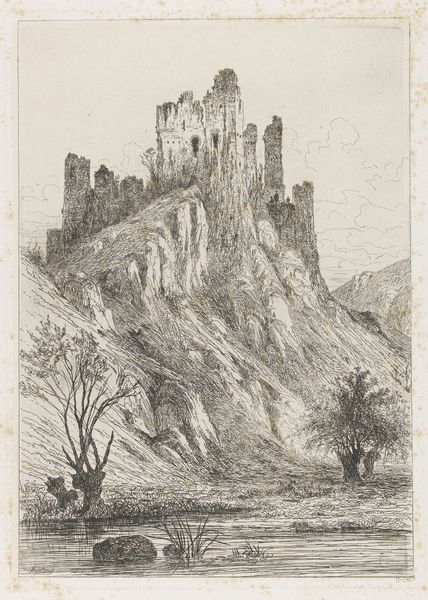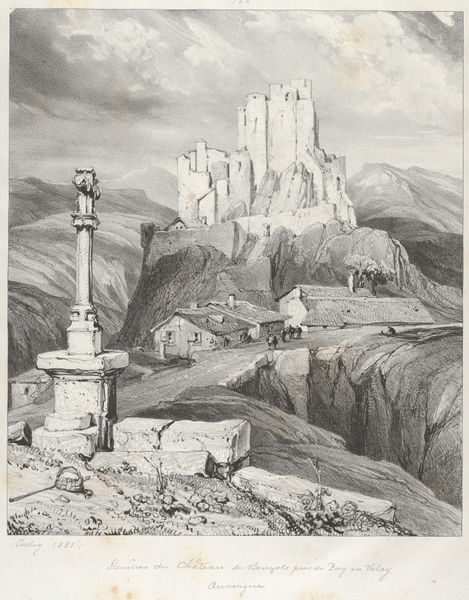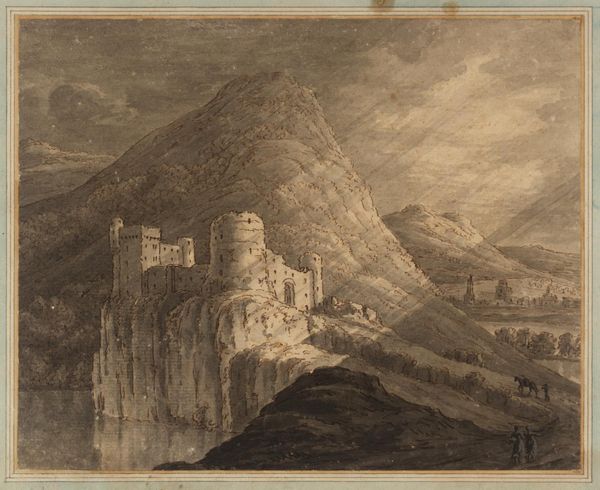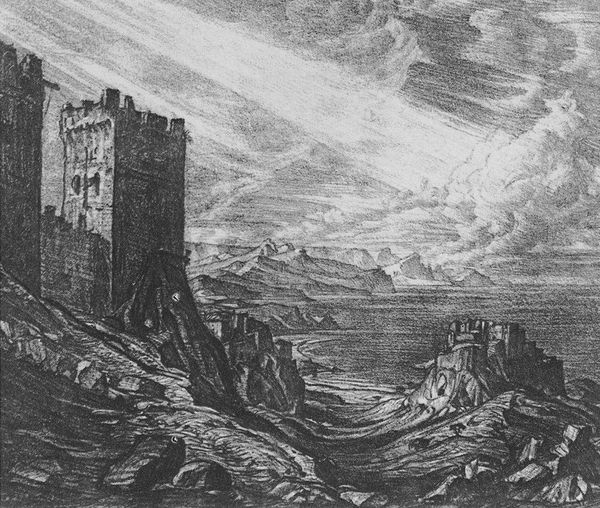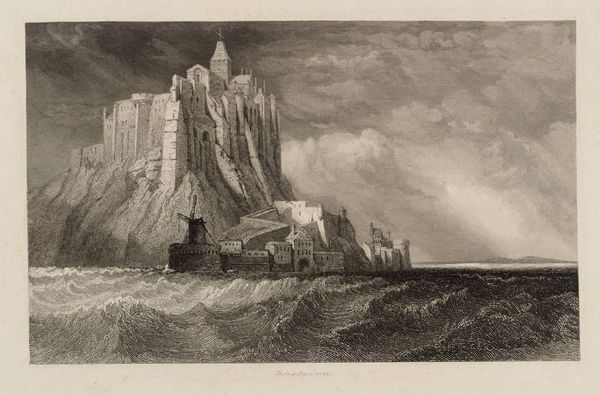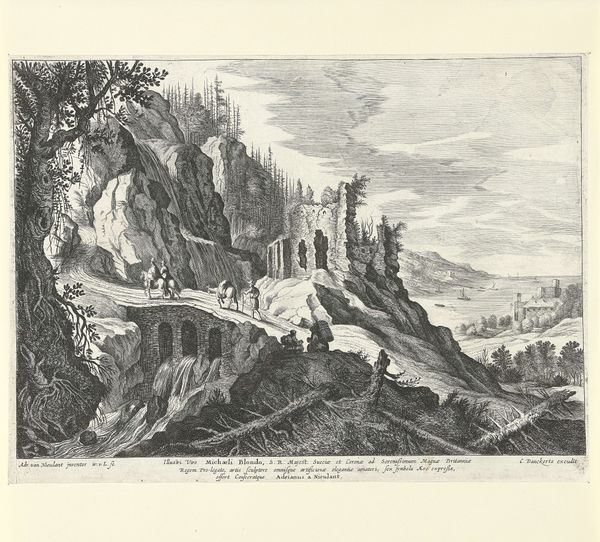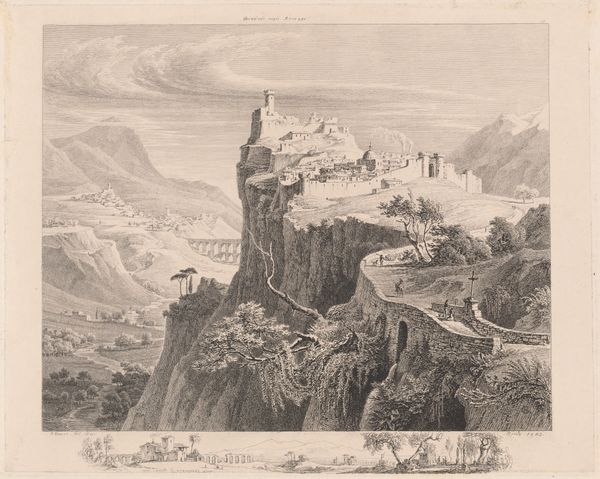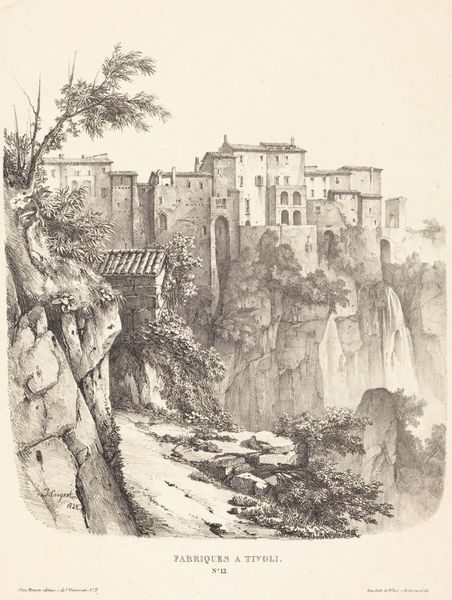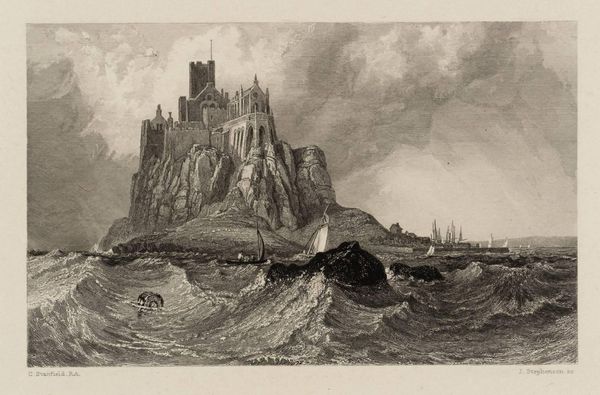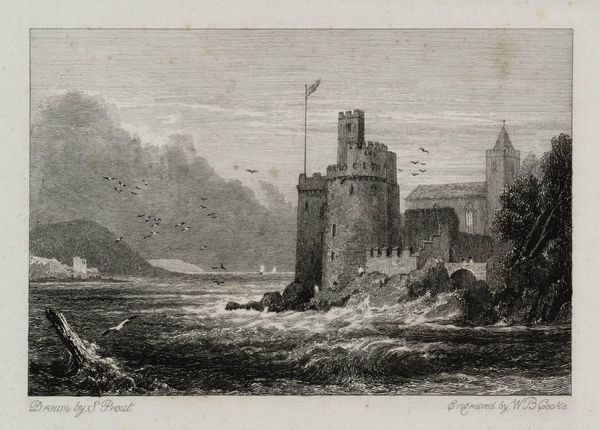
drawing, print, paper, photography, pen, engraving
#
drawing
# print
#
pencil sketch
#
landscape
#
charcoal drawing
#
paper
#
photography
#
romanticism
#
pen-ink sketch
#
pen
#
cityscape
#
engraving
Copyright: Public domain
Curator: Today we are looking at "Torre De Comares 1832 David Roberts". It’s an engraving that captures the architecture and landscape. Editor: It strikes me as a bit gloomy. The palette is limited, dominated by cool grays. It’s interesting that the artist decided to include that tiny walking figures in the foreground; they make the whole construction seem gargantuan. Curator: David Roberts, the artist, was deeply engaged with architectural and historical contexts. This engraving is likely rooted in Romanticism, reflecting the era’s fascination with history. The lack of bright colour says much about the conditions under which it was produced, how they informed what it would be capable of representing and to whom. Editor: Speaking of that production, I wonder about the labour that went into making it, the skilled artisan who transferred Roberts' vision into this medium. And the paper, probably high-quality and expensive. Were there particular workshops that he favored for printing his architectural views? Curator: The fact that he represented the towers themselves suggests themes of power and empire that can be placed into art theory discourses about colonization and orientalism that were extremely prevalent at this time. How would such imagery then situate the people also captured in the scene in positions relative to that same hierarchy of power and privilege? Editor: That is an insightful consideration that opens many questions as we ponder this picture, indeed. I imagine there would be sharp differentiations between the labour necessary for production of a tower like that compared to Roberts sitting there, taking time for this process. And perhaps those are not represented quite equally. Curator: Certainly something to consider more deeply. It causes us to question the act of capturing a distant society under the artist’s specific Western point-of-view in relation to an understanding about colonialism. Editor: And how does his vantage point mediate his depiction of that culture. Curator: Ultimately, the act of representation bears profound meaning. I believe our engagement should extend beyond aesthetics. It is about how we can understand art as active participants in power and control. Editor: And what kinds of production it normalizes, if not hides, to continue producing art, power, and interpretations thereof, even today. Curator: Exactly! This dialogue helps see art within contemporary, relevant, social and political implications that will then move toward transformative societal practice. Editor: Very helpful indeed; thank you for those insights.
Comments
No comments
Be the first to comment and join the conversation on the ultimate creative platform.
